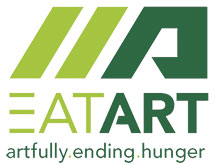
 CE Interview: Todd Clark Senior Pastor, Discovery Church, Simi Valley, CA
CE Interview: Todd Clark Senior Pastor, Discovery Church, Simi Valley, CA
In a congregation of 1,500 people, Todd Clark leads Discovery Church with the view that his goal is not primarily to become bigger, but rather to become better. “We know that if we can just get better every week, we will get bigger,” Clark says.
“This allows us to break down a weekend into smaller bites that are easier to metabolize. We can ask questions like, ‘Where were we weak this past weekend? And where were we strong?’ We can then work on minimizing our weaknesses and adding even more energy to our strengths,” Clark, 41, says.
“Our goal in getting better is not so much to eliminate all our weakness. It is to just make our strengths so strong that people will put up with or overlook our weaknesses! But we also know that getting bigger will not necessarily make us better.
“Getting better is sometimes hard to measure, but I am certain that getting better is what ultimately will make us bigger.”
What is your conversion story?
I grew up in Olathe, KS. One of my earliest memories of church was my dad who had started a Christian bookstore in our basement. People would knock on our door and then head down into the basement to buy all kinds of books – Thomas Kincade Bible covers and bookmarks. Dad soon moved the store out of the basement into a strip mall and it grew and grew and grew. It probably has much to do with my entrepreneurial spirit and tendencies today.
I accepted Christ when I was in elementary school and I was baptized by my dad at Johnson County Christian Church in Overland Park, KS. I decided at church camp, my freshman year of high school, that I would be a youth pastor one day. It didn’t hurt that my “camp girlfriend” – who is now my wife – also stood up that very same week at camp and publicly stated that she was one day going to marry a pastor. That added a little fuel to my fire and urgency to my decision!
What is the meaning of the church strategy — from foyer to the living room to the kitchen?
The foyer is where we welcome guests. The living room is where we make friends. The kitchen is where we become family.
We love welcoming “guests” each week at Discovery, but we do not want people to forever remain guests. We want them to have easy and obvious steps to making friends and become family. We adopted this strategy from North Point Community Church when we launched Discovery Church nine years ago. It has served us very well as people understand in easy and obvious steps where they can grow next.
How do you grow a church from a handful to 1,500?
When a church grows from a handful of people to hundreds or thousands, it has far more to do with God than Todd, or any other pastor for that matter. I believe that God works in people, but I also believe that God works in places and that we do not start from scratch anywhere with anyone – we simply join God in what he was already doing.
How were you able to overcome huge problems or “train wrecks” in the past nine years as a result of fast growth?
By God’s grace we have sidestepped some massive train wrecks when it comes to new staff hires, staff fires, buying land, building buildings, etc., mainly because of our executive staff team and elder team. Many of us have been together for close to nine years now and there is a huge amount of trust, authenticity and honesty with each other. This plurality of executive leadership allows us to avoid many potential “train wrecks.”
It is true that none of us are as smart as all of us. I am certainly not the smartest person at Discovery. I just got here first. If Discovery is going to reach our full redemptive potential, I need all these other voices around me. When I lead, I strive for “alignment.” I have found that acceptance and agreement are not the same as alignment. To me acceptance is when you have their head; agreement is when you have their heart. Alignment is when you have their head, heart and energy all focused in the same direction.
I can tell you that as our church has grown, it has not just become a “bigger version” of what it once was; at each stage it becomes a completely new and unique organization. What got us to where we are will never get us to where we need to be. So we are always changing and rearranging people, positions, service times, ministry environments and methods.
As we change and rearrange team members, ministries and methods we are very aware that these “changes” affect hundreds or thousands of real people’s lives, so we give tremendous thought, preparation, prayer and care to changes. In fact, we don’t call changes “changes,” we call them enhancements. Changes can often be made by anyone and they often lack understanding and skill. Trust is the currency we use for future enhancements!
What are the challenges to reaching people in Simi Valley?
Simi Valley is not radically diverse in relationship to other parts of Ventura County. But it is very diverse in comparison to most other parts of the country. A big part of the reason my wife, Rene, and I wanted to move from Kentucky to plant a church in Los Angeles is we wanted our children, Ruby and Cole, to grow up in a more diverse environment.
The obstacles to doing ministry in Simi Valley have nothing to do with diversity or ethnicity. The number one obstacle by far to doing ministry in Simi Valley is “comfort.” Comfort is the god of people in our valley. Truly, when you can afford it in LA, you move to valleys like Simi to be comfortable, safe and secure. Families and lives are designed around being comfortable in every way. Pushing people beyond their relational, emotional, spiritual, financial comfort zones is the greatest challenge. I believe with all of my heart, and you will never convince me otherwise, that an over-commitment to comfort will cause a person to miss about 90 percent of this world. Most of the world does not live like us. If comfort is our god we will never be willing to go and make disciples of all nations as God has called us to do.
What environments do you create to help influence those who may still be “outsiders”?
We are very, very careful about our language: the things we say from the stage or in print. Being sure that what we are communicating can be easily and obviously understood by any person in our valley. Our grid for communication and messages is not our congregation; our grid is those who are not yet here. We always think “others” first.
______________________________________________________
 ‘You get the art and the kids get to eat’ — and live
‘You get the art and the kids get to eat’ — and live
“Eat Art” became my heartbeat and passion on Thanksgiving Day 2010. I was in Texas with extended family watching the Dallas Cowboys play football, if you can call it that! I had eaten way too much about an hour earlier, and the turkey was about to cause my eyes to close. As I was watching football I was also surfing Facebook and Flickr and had several people asking me if they could purchase some of the photos I had posted over the past few days.
As I sat on the couch with a full stomach I began to wonder how I could sell a few images and use the money to feed people with empty stomachs. Mix that momentary thought with my entrepre-neurial tendencies, and the journey and evolution of Eat Art began.
During the summer of 2011, EA was all I could think about, and with the generous investments from three close friends, this grassroots cause to artfully end hunger was born. I began dozens of conversations, compiled initial contributors and
photos; apparel was designed and ordered and the website launched on September 1 last year.
I was so nervous. It was like I had given birth to this baby and I was not sure if anyone would think it was beautiful. But in the first 15 days there was enough art and apparel purchased to send 15,000 meals to hungry children. I was absolutely blown away! I now believe we could truly become a major force in fighting hunger. Sixty percent of every Eat Art purchase sends food overseas and the other 40 percent is used to print and ship the artwork. I take no salary from the venture — and it’s already fed more than 69,000 kids!
Did you know there are approximately 3 billion people who live on less than $2.00 a day and 1.4 billion people who live on less than $1.25 a day (UNICEF). Every single day children are dying just because they don’t have enough food to eat.
I believe in 2012 we could, together, send 1 million meals to hungry children. I believe five years from now we could be sending a million meals a month! You get the art and the kids get to eat! www.eat-art.org — TC



Hi Marilyn, thank you for your question. You can reach Discovery Church directly by visiting https://discovery.rlcmdev.com/ or by calling 805-522-1360.
I live in Palos Verdes, visiting a friend in Scottsdale, Arizona who goes to CCV and knew you when you were here. Your church is too far for me to drive but I would like to connect with a similar church body close to my home in Palos Verdes , do you have a recommendation?